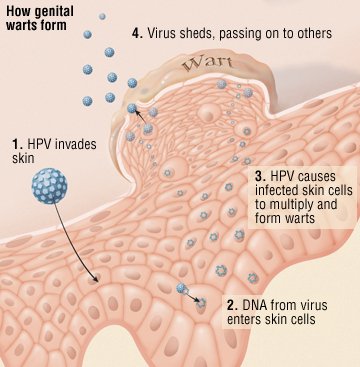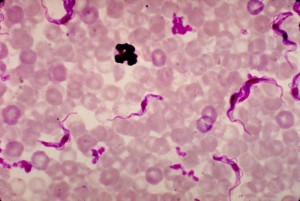
Many volunteers world-wide commit themselves to raising funds for cancer research and cancer charities. Many hundreds of thousands more work in the industry as carers, or researching, prescribing, diagnosing and manufacturing drugs. Huge companies spend fortunes on cancer research. After so long and so many billions spent what exactly has cancer research revealed?
There have been regular breakthroughs in our understanding of cancer, but little progress in its treatment. Modern research into cancer began in the 1940's and 50's when scientists isolated substances that killed cancer cells growing in a petri dish, or leukaemia cells in laboratory mice. Early successes in chemotherapy set the pace and received much media exposure, even though they only applied to 5% of cancer treatments at most.
Serving humanity by solving its major diseases has a celebrity status, there is a lot of kudos and an air of Hollywood involved in such things. Cancer research is high profile activity and every now and then a scientific treatment is discovered that gains wide recognition, such as the HPV-16 trial, but it only applies itself to the treatment of a small percentage of cancers. Mass-media hype is part of the problem of how we see cancer. Early discoveries set up an expectation that there was a cure-all treatment, a 'magic bullet' that would make its discoverer famous by curing cancer across the world. The idea stems in part from aspirin, the original bullet that magically finds its way to the pain and diminishes it.
In the 1950's and 60's huge and expensive research projects were set up to test every known substance to see if it effected cancer cells. You might remember the discovery of the Madagascar Periwinkle (Catharansus Roseus), which revealed alkaloids (vinblastine and vincristine) that are still used in chemotherapy today. Taxol, a treatment for ovarian and breast cancer originally came from the Pacific Yew tree. A treatment for testicular cancer and small-cell lung cancer called 'Etoposide' was derived from the May apple. In 'Plants Used Against Cancer' by Jonathan Hartwell over 3,000 plants are identified from medical and folklore sources for treating cancer, about half of which have been shown to have some effect on cancer cells in a test tube.
When these plants are made into synthetic drugs, single chemicals are isolated and the rest of the plant is usually thrown away. The medicinally active molecules are extracted from the plant and modified until they are chemically unique. Then the compound is patented, given a brand name and tested.
In the first phase it will generally be tested on animals, the second phase will decide dosage levels and in phase 3 it is tested on people. By the time it is approved by the Federal Drugs Authority (in U.S.A.) or the Medicines and Healthcare Products Regulation Agency (M.H.R.A.) in Britain, the development costs for a new drug can reach five hundred million dollars, which eventually has to be recouped from the consumer.
In addition to 'treatment directed' research such as finding chemicals that effect cancer cells, basic research continues apace, into differences between normal and cancerous cells. In the last 30 years this research has revealed much about our nature, but still no cure. Below are some current strands of scientific research into cancer.
Antibody-guided therapy: this is the original 'magic bullet'. Cancer researchers use monoclonal antibodies to carry poisons directly to the cancer cells without harming others.
Chronobiology: much of what happens in our bodies is governed by cycles, from the female monthly cycle to the cycles of brainwaves. Human health depends on interacting cycles geared to acts of perception, breathing, reproduction and renewal. Chronobiology analyses these cycles in relation to different times, such as day and night. Hormones, including stress and growth hormones, have their own cycles. For example they may be at their highest activity in the morning and quieter at night. Cancer cells seem to no longer obey the same cycle rates as normal cells.
Anti-telomerase: one part of a cell, called the telomerase, governs the life cycle of a cell and how many times it may multiply. Some cancer cells escape this control and can increase the number of times they divide, becoming 'immortal'. Researchers hope to gain control over cancer cells by stopping the action of telomerase.
Anti-angiogenesis: secondary tumours (metastasis) can persuade the cells around them to grow new blood vessels to feed the tumours, supplying oxygen and nutrients for the growing cancer. This process is called angiogenesis and research here is finding ways to stop the signals to normal cells that start the process.
Anti-adhesion molecules: Cancer cells form into clumps, unlike those in a petri dish which form into a flatter arrangement. When there are clumps of cells they seem to possess a quality that resists treatment. This strand of research looks at ways that can stop the cells clumping together, by dissolving the clumps for more effective treatment.
Anti-oncogene products: specific portions of D.N.A., called oncogenes, that have an important role in promoting cancer growth. Drugs that interfere with the production of oncogenes may be useful for the future treatment of cancer.
Gene therapy: research into the use of tumour suppressant genes is highlighted in the British National Cancer Plan as an important element. Essentially, bits of DNA are inserted to replace missing or damaged genes, possibly preventing the development of cancer in someone who might be 'high risk'.
Vaccines: very quietly the search for a general cure for cancer is being put aside in preference to finding a vaccine. The whole idea of a cure or treatment that is 'the same for everybody' breaks down in the case of the specific, chaotic conditions that cause cancer in an individual person. After billions spent on research for the holy grail of a cancer cure, the search is now on to find a vaccine.
At a recent cancer immunology conference in the US top immunologists from 21 nations attended lectures on the latest immunology topics such as:cancer immunosurveillance, immunoediting, cancer antigen discovery, monitoring and analysing the immunological response to human cancer, cancer vaccine development.
The Cancer Vaccine Collaborative (CVC) was launched to much excitement. It is a unique research program that should improve how cancer vaccines are developed, based on a collaboration of six New York medical centres and one in Minnesota. The aim of their research is to find out how to effectively immunise against cancer using a vaccine, using 'action research'.
Vaccines made from donor blood are proving to work for some cancers. Experiments with bone marrow transplants show there are about 40,000 different tissue types making it hard to find a match. Usually a perfect match can only be found within the patient's direct family. Incorrect matches can create a host of secondary dis-eases. Scientist are finding ways to train Killer T cells taken either from the host or a donor, to more effectively attack cancer cells. They have noticed that donor Killer T cells that are already 'primed' for a particular cancer (e.g. the donor body cells 'remember' the disease) can be highly effective. It may take many years to prove validity, reliability, safety and efficacy for this treatment. Harvesting the natural immunity of our own, or donor cells with the aid of genetic engineering may well become a big player against modern immune attacking dis-eases.
Increased screening: this type of research looks at genetically identifying individuals who might be at high risk of certain types of cancer and is partly a preparation for possible vaccines. Genetic counselling is set to become a 21st century contributor to health care based on prevention of disease as much as cure.
Combinations: research from West Germany (Grossart-Maticek) argues that there is no single cause for cancer, similar to the pattern in most chronic illness. It shows there are environmental, psychological and spiritual dimensions to disease. The implication is that treatment should be on the same levels, and that no single treatment is likely to be effective because there is no single cause. This observation links with the position of many Holistic practitioners who often have a wider view of health than orthodox medical practitioners.
Dr. Robert Buckman is an experienced cancer researcher, and author of the informative book: 'What You Really Need to Know About Cancer'. He summarises what he sees as the present position of scientific cancer research:
"We now have a very large number of ways of looking at cancer cells in the laboratory. We have thousands of different types of cancer cells growing in dishes, many of which can be grown and then cured in laboratory bred mice. We also have thousands of different ways of looking at and testing those cells. We can look at the cells' growth, their abilities to produce different substances, their sensitivity to some chemotherapy drugs and their resistance to others, the way they respond to growth factors, their genetic material including oncogenes and substances controlled by oncogenes, their ability to effect other cells (of the immune system, for example), their ability to damage membranes and invade, their structure under the electron microscope and whether or not the cell surface has any of hundreds of different marker molecules on it. These are just a few examples of what can be done nowadays: the complete list of ways in which cancer cells can be tested would probably be longer than this entire book. But here is the snag: although this accumulation of experience is wonderful and commendable, cancer in human beings is far more complicated then any laboratory system can ever be (at least in the light of current knowledge)".
This is an extract from 'Don't Get Cancer'a new ebook available only at: http://www.simonthescribe.co.uk/don'tget1.html [http://www.simonthescribe.co.uk/don]














